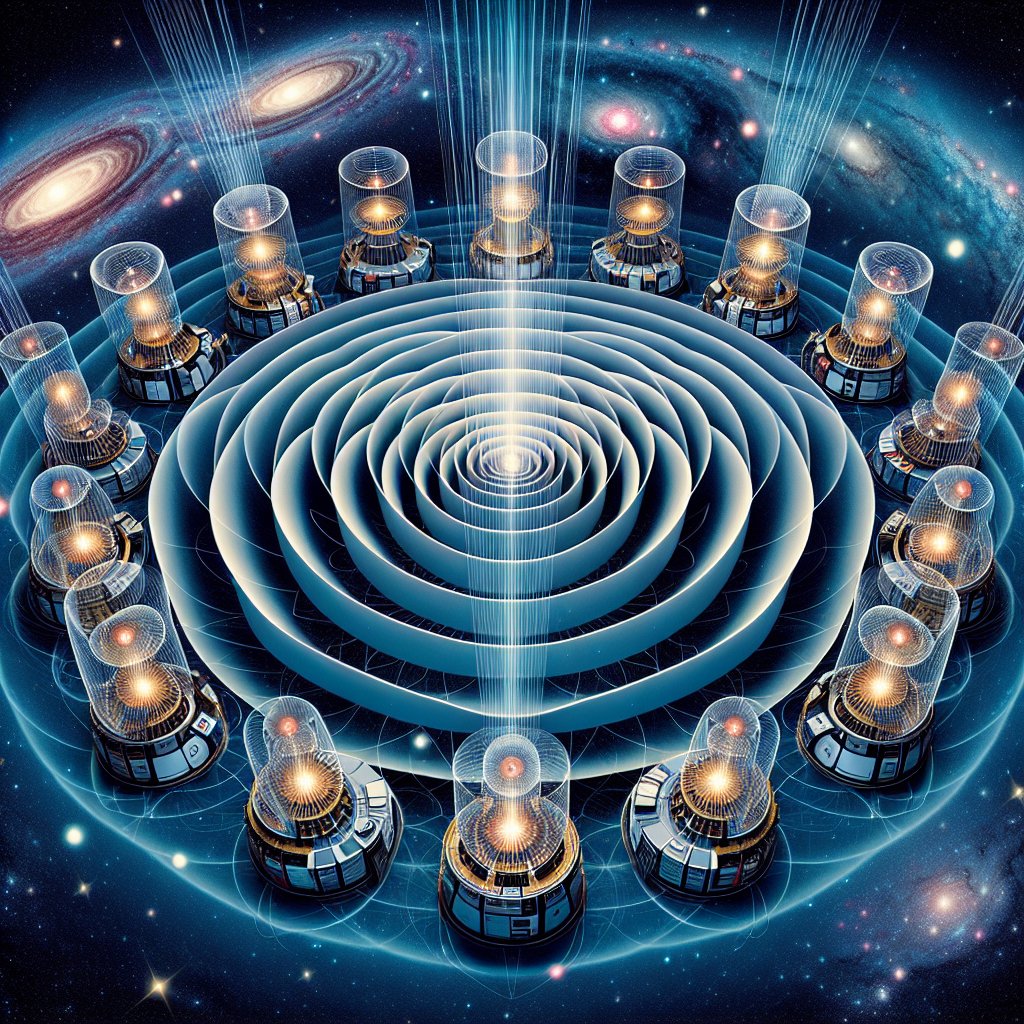A New Era for Gravitational-Wave Astronomy
The universe speaks to us in whispers of gravity, and for years, scientists have strained to hear these subtle murmurs. Gravitational waves, ripples in the fabric of spacetime predicted by Einstein over a century ago, offer a unique window into the most cataclysmic events in the cosmos, from colliding black holes to the explosive birth of the universe itself. Now, a groundbreaking study has unveiled a new technology poised to revolutionize our ability to detect these elusive waves, ushering in a new era of discovery.
Quantum Squeeze Light: Illuminating the Cosmos
The heart of this technological leap lies in the innovative use of ‘squeezed light.’ This isn’t light squeezed from a tube, but rather a quantum phenomenon where the uncertainty in one property of light, such as its amplitude, is reduced while the uncertainty in another property, like its phase, is increased. This might sound esoteric, but it has profound implications for gravitational-wave detectors. These detectors, like the Laser Interferometer Gravitational-Wave Observatory (LIGO) and Virgo, use laser beams to measure incredibly tiny changes in distance caused by passing gravitational waves. By injecting squeezed light into the interferometer, researchers can effectively reduce the quantum noise that limits the sensitivity of the detectors. This noise arises from the inherent uncertainty in the position and momentum of photons, the particles of light. Squeezed light allows scientists to ‘squeeze’ this uncertainty, making it easier to discern the faint whispers of gravitational waves against the background noise.
A Symphony of Collaboration: Advancing the Field
This breakthrough isn’t the work of a single individual but a testament to the power of global scientific collaboration. Researchers from institutions worldwide have contributed to the development and implementation of squeezed light technology in gravitational-wave detectors. This collaborative spirit has fueled the rapid advancement of the field, culminating in the first direct detection of gravitational waves in 2015. The new technology promises to amplify this success, enabling the detection of even fainter signals and opening up a vast new landscape of cosmic phenomena to explore.
Beyond Black Holes: Exploring the Universe’s Secrets
The enhanced sensitivity offered by squeezed light will allow scientists to detect gravitational waves from sources previously beyond our reach. This includes not only more distant black hole mergers but also events like supernovae explosions, the collision of neutron stars, and potentially even the elusive stochastic background of gravitational waves from the early universe. Each of these events provides a unique opportunity to test our understanding of fundamental physics and to probe the extreme conditions that exist in the cosmos.
Unraveling the Mysteries of the Early Universe
Perhaps the most exciting prospect is the potential to delve deeper into the universe’s infancy. The stochastic background of gravitational waves is a faint hum of primordial ripples thought to have originated from the Big Bang itself. Detecting this background would provide invaluable insights into the very first moments of the universe’s existence, a period shrouded in mystery. Squeezed light technology brings us closer to unlocking this cosmic time capsule, offering a glimpse into the universe’s genesis.
Challenges and Future Directions
While squeezed light offers a significant leap forward, challenges remain. Integrating this technology into existing detectors is a complex undertaking, requiring meticulous engineering and careful calibration. Furthermore, researchers continue to explore ways to further enhance the squeezing of light, pushing the limits of quantum mechanics and seeking even greater sensitivity.
The Future of Gravitational-Wave Astronomy
The future of gravitational-wave astronomy is bright. With squeezed light technology at the forefront, we stand on the cusp of a new era of discovery. The universe is a vast and mysterious place, and gravitational waves offer a unique and powerful tool for exploring its hidden depths. As we continue to refine our ability to listen to these cosmic whispers, we can expect a symphony of revelations about the universe’s most dramatic events and its deepest secrets.
- Increased Detection Range: Observe gravitational wave events from much further distances, expanding the observable universe for these phenomena.
- Fainter Signal Detection: Capture weaker signals, revealing events that were previously undetectable and broadening the range of observable phenomena.
- Improved Parameter Estimation: Obtain more precise information about the properties of gravitational wave sources, such as the masses and spins of black holes.
- Stochastic Background Detection: Move closer to detecting the stochastic background of gravitational waves, providing insights into the early universe.
A New Lens on the Cosmos
The application of squeezed light in gravitational-wave detectors represents a significant milestone in our quest to understand the universe. It provides a new lens through which we can observe the cosmos, revealing the hidden dynamics of its most extreme environments. As we continue to push the boundaries of technology and scientific understanding, the whispers of gravity will undoubtedly speak volumes about the universe’s past, present, and future.

